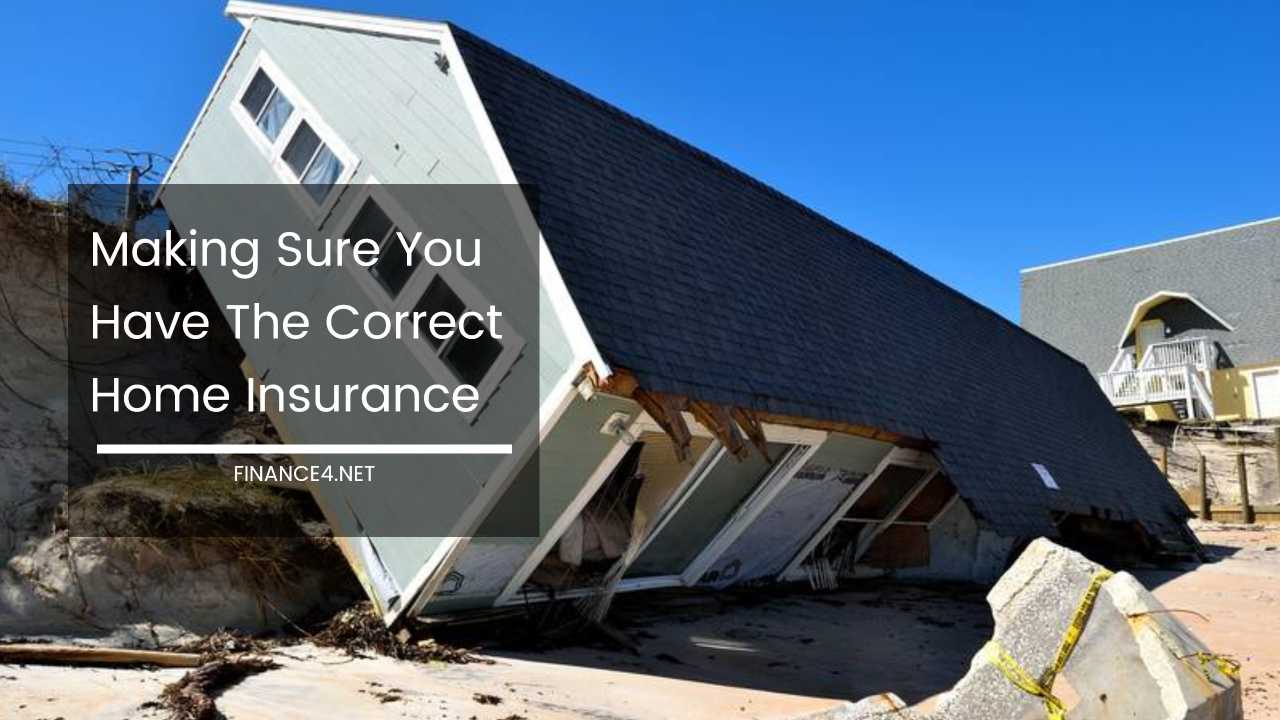Home Insurance Guide: Get the Coverage You Need

Making Sure You Have the Correct Home Insurance: Protecting Your Most Prized Possession
Our homes are more than just bricks and mortar; they’re sanctuaries, havens, and a reflection of our lives. Unfortunately, these cherished spaces are also susceptible to a variety of unforeseen events that can cause significant damage.
This is where home insurance steps in, acting as a financial safety net to help us rebuild and recover in the face of disaster.
However, simply having home insurance isn’t enough. Choosing the right coverage ensures you have the necessary protection when you need it most.
Here’s a comprehensive guide to navigating the world of home insurance and securing the peace of mind that comes with knowing your investment is safeguarded.
Rebuilding Your Sanctuary: Dwelling Coverage Explained
Imagine a fire ripping through your home, leaving a devastating trail of destruction. Rebuilding costs go beyond the market value you see advertised.
Standard homeowner’s insurance focuses on dwelling coverage, which should cover the entire cost of rebuilding your home and any attached structures, like a garage.
Here’s the key distinction: market value considers the land, location, and surrounding property prices, while dwelling coverage solely focuses on the reconstruction cost. This cost can be significantly higher due to factors like:
- Stricter building codes: Modern building codes often require upgrades that weren’t necessary when your house was built. These upgrades can include earthquake-resistant features, energy-efficient improvements, or stronger roofing materials.
- Debris removal: Clearing away the wreckage from a disaster adds a hefty sum to the reconstruction bill. The cost of debris removal depends on the type and amount of debris, as well as local disposal regulations.
- Skilled labor: Finding qualified contractors to rebuild your home can be expensive, especially in areas with high demand or after a widespread disaster.
- Upgrades: You might choose to incorporate improvements during the rebuilding process, such as a more modern kitchen layout or a finished basement. These upgrades will increase the cost of reconstruction.
To determine the appropriate dwelling coverage, consider factors like:
- The size and materials used in your home: A larger home with higher-quality materials (e.g., stone, brick) will naturally cost more to rebuild than a smaller, wood-frame house.
- The age of your home: Older homes may require additional repairs or upgrades to meet current building codes, impacting the rebuilding cost.
- Local building codes: Research the specific building codes in your area to understand potential upgrade requirements.
- Replacement cost vs. actual cash value: Some policies offer replacement cost coverage, which pays to rebuild your home to its pre-loss condition, regardless of depreciation. Actual cash value policies consider depreciation and may not cover the full rebuilding cost.
A professional home appraisal might be necessary to ensure you have adequate dwelling coverage. A qualified appraiser can assess your home’s current value, reconstruction costs, and replacement value based on current building codes and materials.
Protecting Your Belongings: Contents Coverage and Taking Inventory
A damaged home isn’t the only concern. The contents within your walls – furniture, electronics, cherished heirlooms – are equally vulnerable. While basic homeowner’s insurance typically covers some contents, it may not be enough for valuable items like jewelry, artwork, or high-end electronics.
Here’s where contents coverage becomes crucial. To determine the necessary coverage amount, take a detailed inventory of your belongings.
This includes everything from furniture and appliances to clothing and electronics. Documenting your belongings with receipts and photographs provides concrete proof of value in case of a claim. Here are some tips for creating a comprehensive inventory:
- Room-by-room approach: Systematically work your way through each room, listing all the major contents. Include details like brand, model number, and estimated value (based on receipts or online research).
- Capture valuables: For particularly valuable items (jewelry, antiques, artwork), take close-up photos and record serial numbers or appraisals.
- Regular updates: Review and update your inventory periodically as you acquire new possessions or get rid of old ones.
- Digital storage: Store your inventory and documentation electronically for easy access and safekeeping.
Alternative methods: Some insurance companies offer contents coverage based on the size and number of rooms in your home. This approach might be suitable for those who don’t have many high-value possessions, but remember, replacing a stolen collection of antique cameras can quickly deplete a generic coverage amount.
While adding contents coverage increases your premium, consider the financial strain of replacing numerous lost or damaged belongings. Peace of mind and financial protection are invaluable investments.
Beyond the Basics: Natural Disasters and Additional Coverages
Standard home insurance policies typically exclude certain events like floods or earthquakes. Here’s where additional coverages become essential:
-
Flood insurance: This coverage is crucial for homes located in floodplains or areas with high flood risk. The amount of coverage needed depends on your specific flood risk zone, determined by the Federal Emergency Management Agency (FEMA) through Flood Insurance Rate Maps (FIRMs). Remember, there’s typically a 30-day waiting period before flood insurance takes effect after purchase.
-
Earthquake insurance: Earthquakes are a significant threat in certain regions. This separate coverage protects your home from structural damage caused by earthquakes. The cost of earthquake insurance varies depending on your location, the value of your home, and your deductible.
-
Other potential coverages: Depending on your location and specific needs, you might consider additional coverages like:
- Windstorm or hurricane coverage: Especially important in coastal areas or regions prone to these events.
- Theft coverage: Provides protection for stolen belongings, often with limitations based on the type and value of the items.
- Identity theft coverage: Helps cover expenses associated with restoring your identity if it’s stolen.
Understanding Deductibles and Premiums:
-
Deductible: This is the amount you’ll pay out of pocket before your insurance kicks in for a covered claim. A higher deductible typically translates to a lower premium, but it also means you’ll shoulder more of the financial burden in the event of a claim.
-
Premiums: The annual cost of your home insurance policy. Premiums are influenced by various factors, including:
- The value of your home and its contents
- Your location and the associated risks
- The amount of coverage you choose
- Your deductible amount
- Your claims history (having a history of filing claims can increase your premium)
The Importance of Shopping Around:
Don’t settle for the first insurance quote you receive. Get quotes from multiple reputable insurance companies to compare coverage options and pricing. Consider factors like:
- The company’s financial stability
- Customer service reputation
- The ease of filing claims
Maintaining Your Coverage:
- Review your policy annually: Your needs and the value of your possessions may change over time. Review your coverage limits and deductibles regularly to ensure they remain adequate.
- Update your inventory: As you acquire new valuables or get rid of old ones, update your contents inventory to maintain accurate coverage.
- Maintain your home: Taking steps to mitigate potential risks (e.g., installing storm shutters, regularly maintaining your roof) can sometimes lead to lower premiums.
- Communicate with your agent: Inform your insurance agent of any changes to your property, such as renovations or additions, to ensure your coverage remains accurate.
Final Thoughts
Home insurance is an essential investment that protects your most valuable asset. By understanding the different types of coverage available, carefully evaluating your needs, and shopping around for the best policy, you can ensure your home is properly protected against a wide range of potential threats. Remember, peace of mind knowing your cherished sanctuary is safeguarded is priceless.



